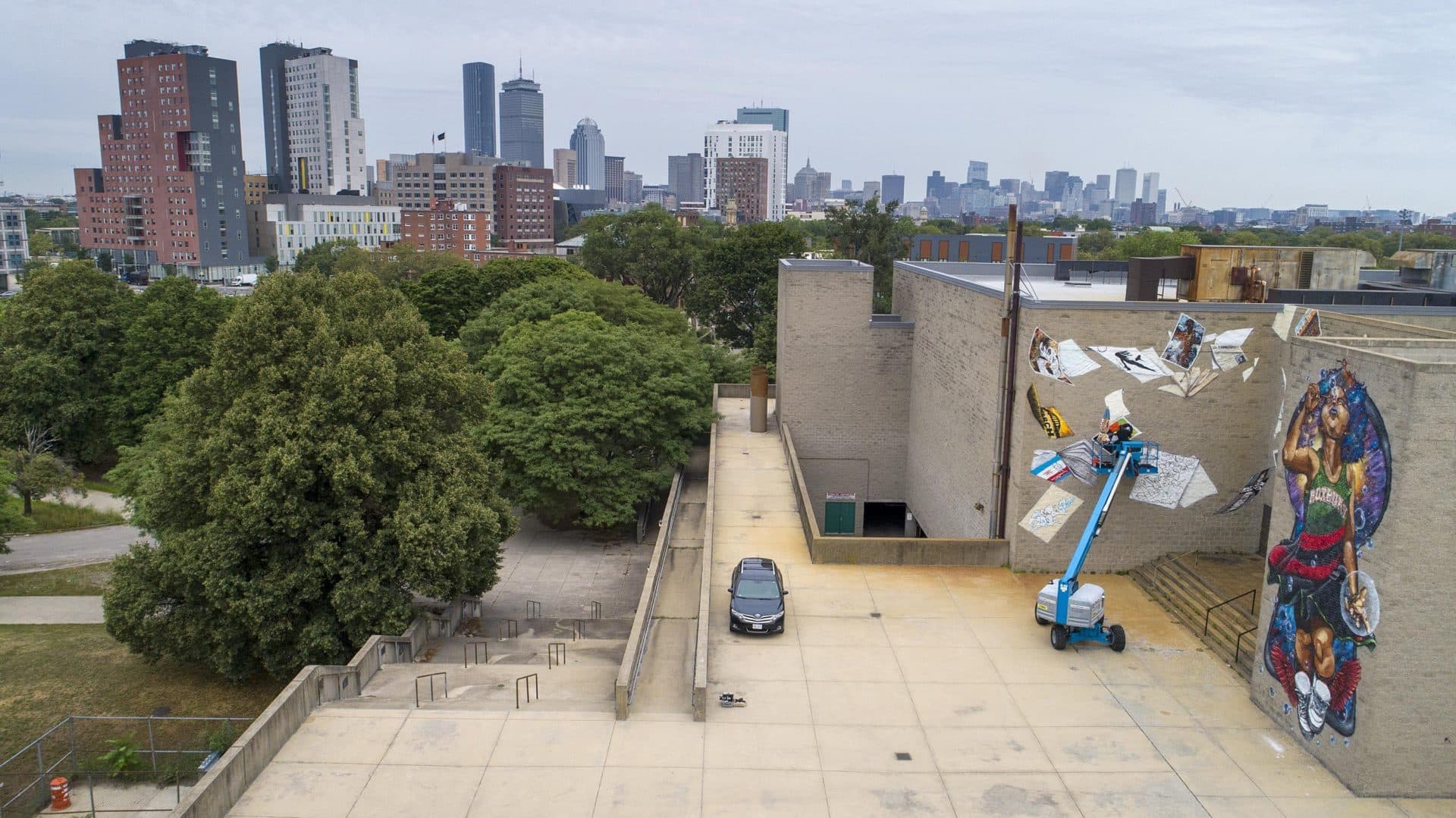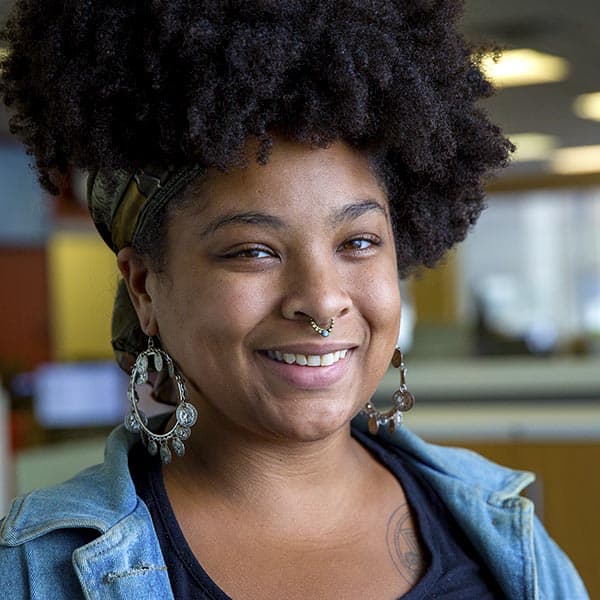Advertisement
With The Mural Project, MFA Hopes To Engage Roxbury Residents
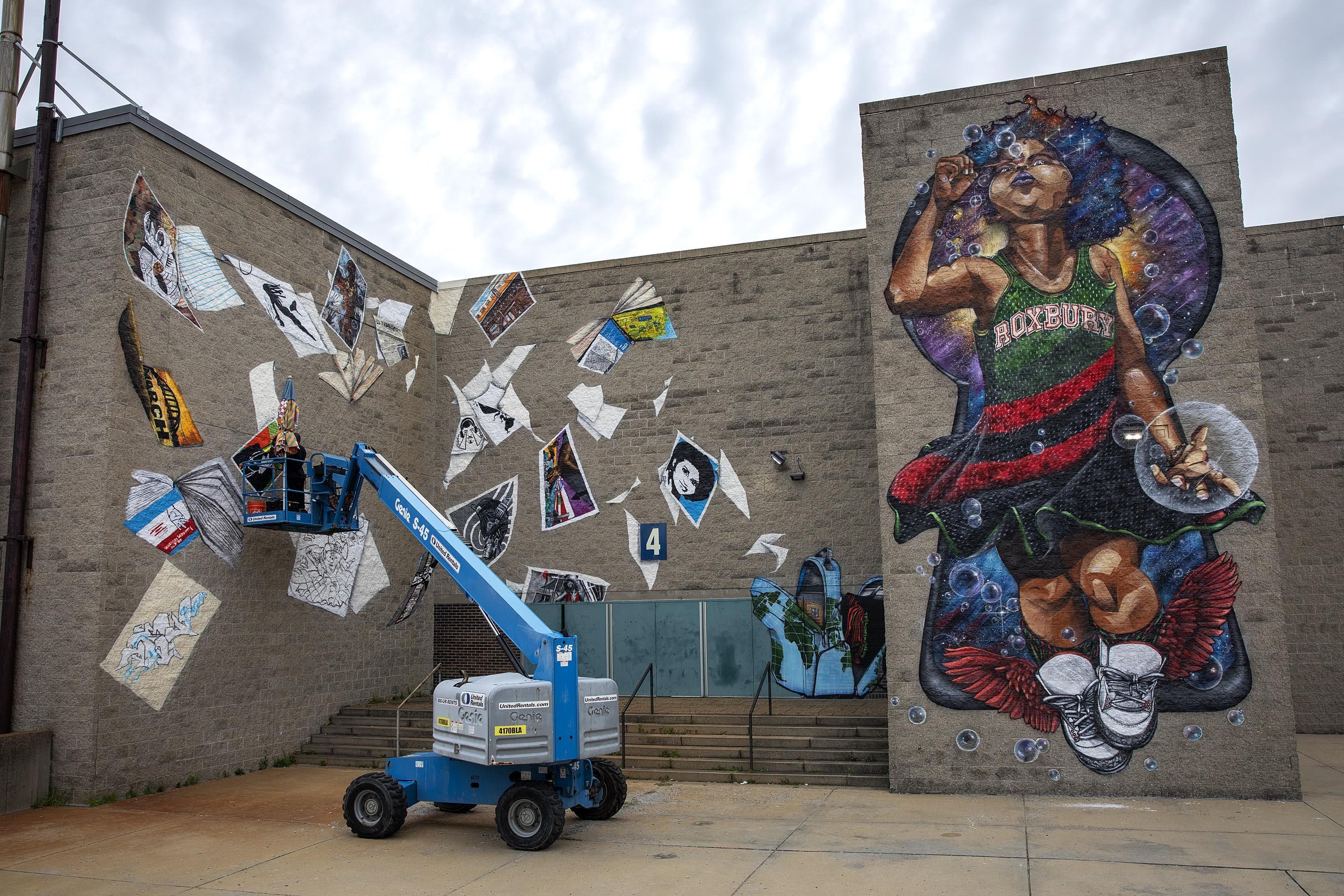
When Dr. Makeeba McCreary joined the staff of the Museum of Fine Arts, Boston in 2019, she got a notification on Twitter that someone tagged her in a tweet. The comment was from state Rep. Byron Rushing who wrote that he was proud of McCreary for becoming the first chief of learning and community engagement at the museum. "Don't let them forget that the MFA is in Roxbury," he wrote.
That statement hit McCreary hard. "I grew up in Roxbury and the South End," she says. "But I never took advantage of the museum until I was hired to work there." McCreary notes what many others have since students of Helen Y. Davis Leadership Academy were racially profiled and harassed at the MFA last year. "There is a sharp disconnect between where the museum is located and who actually enters it," she points out.
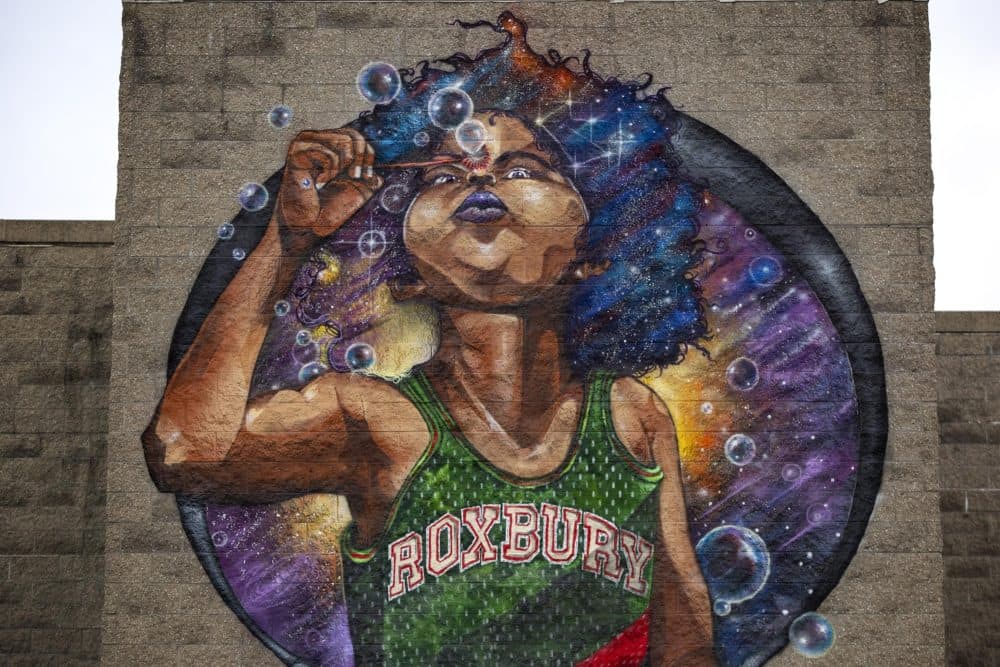
Although the MFA technically sits within the borders of Roxbury, the neighborhood's predominantly Black and Latinx population don't enter the museum's halls. An MFA report shows that from 2013 to 2018, 81% of visitors were white. The numbers tell a complicated story. "They do say that certain folks come to or think about the museum with a sense of invitation, welcome and engagement, and other folks don't," said MFA director Matthew Teitelbaum in a statement last year.
Boston public schools are among some of the lowest users of the museum, McCreary says. "We're incredibly close to so many BPS schools, how in the world is that happening?" she asks. "We find that suburban schools visit the MFA more." The answer, inevitably buried beneath the harsh systemic realities of redlining and institutional racism, isn't easy to excavate.
One of McCreary's first tasks when she started her postition was to co-chair the museum's 150th-anniversary celebration. Many projects were born from the initiative, including purchasing works by local and national contemporary artists. But McCreary had a different idea of how to authentically engage local communities, specifically Roxbury residents.
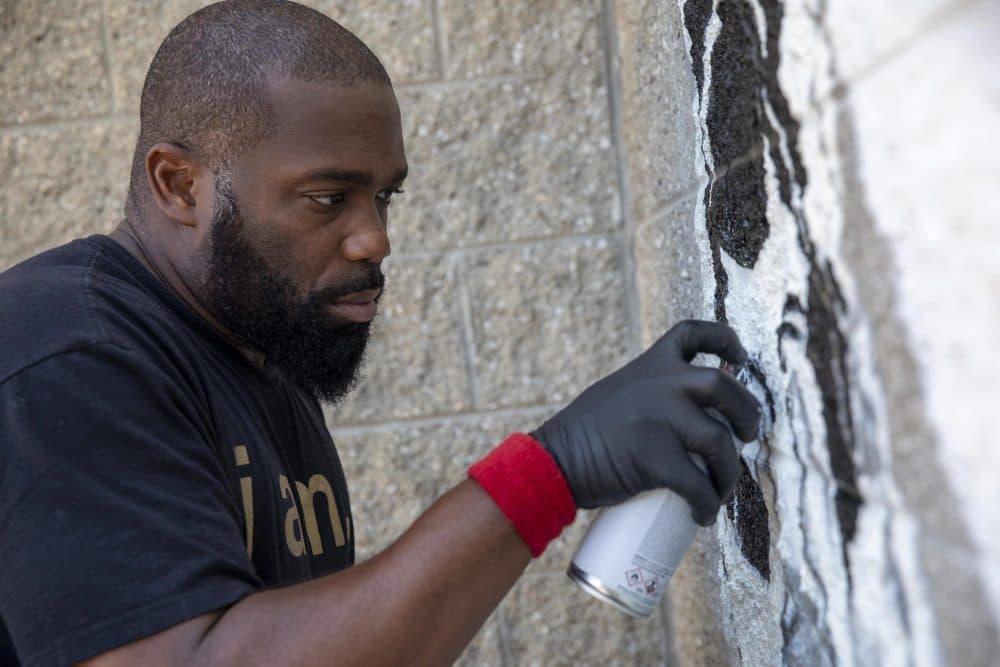
When she reached out to Rob "Problak" Gibbs and Rob Stull about her idea for a project connected to the museum's upcoming "Writing the Future: Basquiat and the Hip-Hop Generation" exhibit, she had no idea if the two would even want to be involved. "This was right as everything with the students from the Davis Academy was going on. All I had was the strength of my word," says McCreary. "And that they would at least allow me to extend my integrity to the conversation, even if the museum hadn't earned that yet."
Stull and Gibbs agreed to meet with McCreary at the MFA for lunch and from there, The Mural Project was born. "Working on the project has been the true essence of a real collaboration from beginning to end," says Gibbs. "Makeeba gave us some parameters... but other than that, we really had the space and opportunity to genuinely express our artistry and craft."
Gibbs was coming down from completing his second "Breathe Life" mural on Tremont Street and wasn't thinking of completing another mural until McCreary asked. "Once we figured out the site and location, it made sense for me to continue the 'Breathe Life' conversation," Gibbs says. "It meant a whole lot more to me, because I'd been building this story, and this mural would allow me to complete that." Gibbs was tasked with creating a mural while Stull, who is well known for his work in the comic book industry, created accompanying artwork and a map of Boston's popular street art pieces.
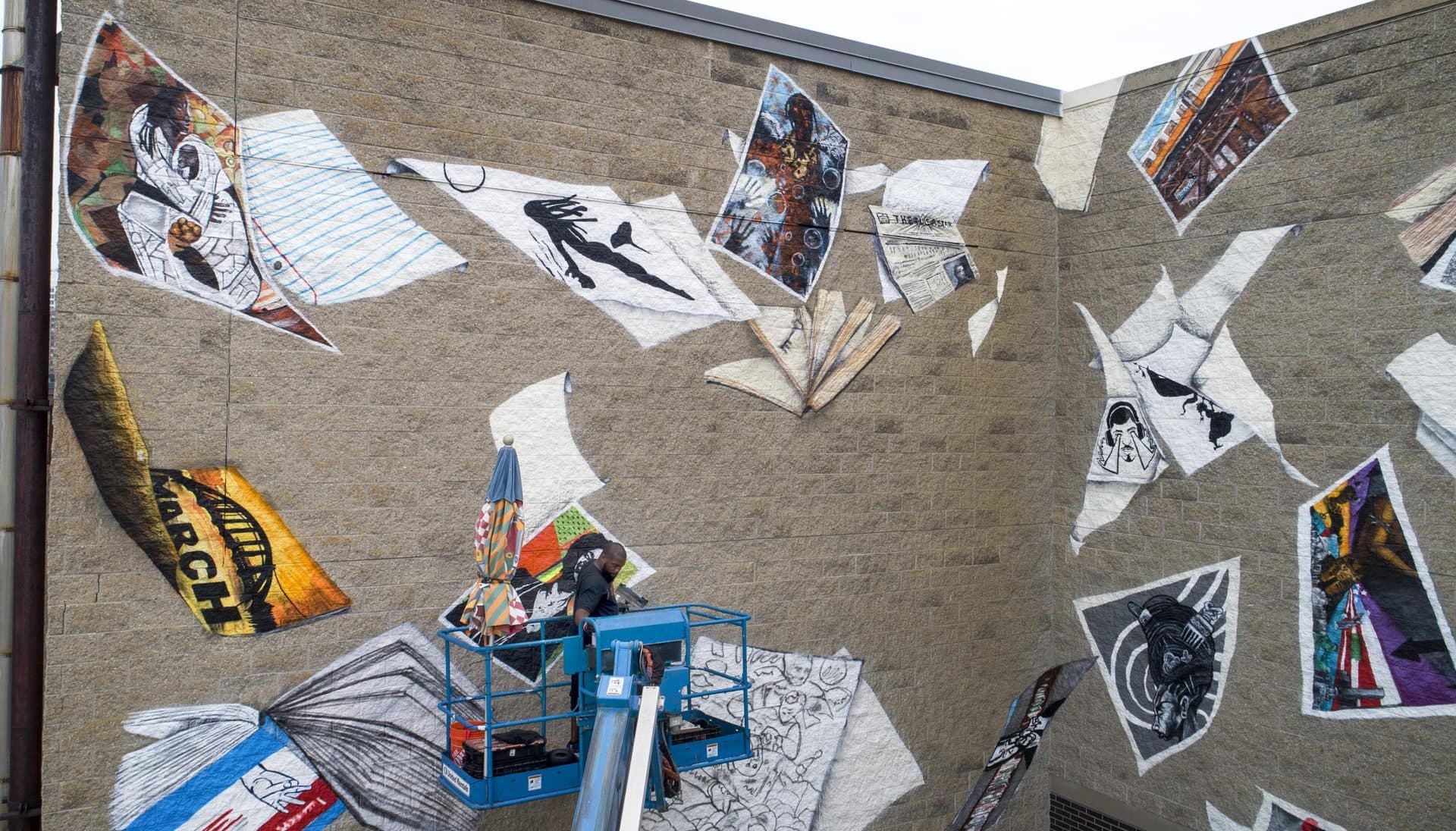
The location of the mural was just as important to Gibbs and McCreary as the mural itself. The subject of the mural, a little Black girl with sneakers blowing bubbles, was in line with the theme of Gibbs' other "Breathe Life" works that feature Black children. But while his other murals sit on the walls of residential buildings (with the exception of the mural inside of Black Market in Nubian Square), this mural would live on the side of Madison Park Technical Vocational High School, Gibb's alma matter. "Not only is it a message to the students at the school, it's right in the heart of Roxbury," Gibbs says.
Shortly after Gibbs went up in the scissor lift to start the mural, protests erupted across the country in May in reaction to the deaths of Ahmaud Arbery, Breonna Taylor and George Floyd. Many marches began in Nubian Square, and the sight of Gibbs, up on the lift painting, became a daily staple for protestors and residents in the area. Gibbs recalls getting a slew of texts and being tagged in pictures on social media. The mural holistically became a backdrop for the protests. "It wasn't what I did," he says, "but it's what it represented and how everybody felt connected to it in those moments."
For McCreary, this solidified why the project was so important to execute in the first place. She debated with herself about whether completing The Mural Project, off-site and away from the MFA, was truly changing how encyclopedic museums operate. "I didn't want to perpetuate this idea of 'otherness'," McCreary says. "That Rob's work is acceptable because it's outside of the museum."
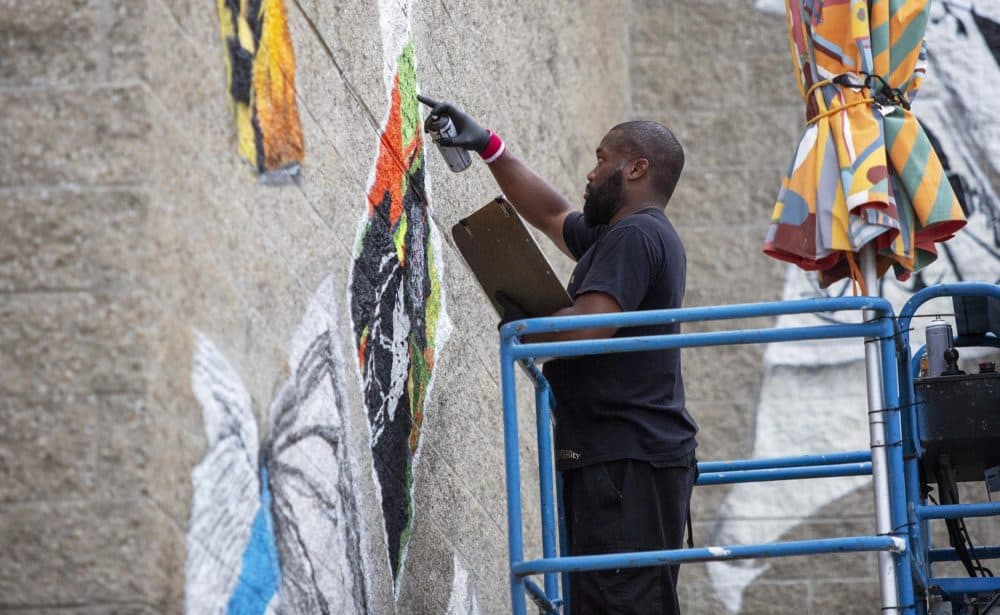
But the point is beyond the corporeal building of the MFA. For McCreary, it's about changing the way we see museums and the ways in which art is valued. What gives art like the work of Gibbs and Stull such cultural significance and value lies in the fact that it lives outside of museum spaces. "Every single time someone stops by or a little girl looks up at the mural and smiles, that's when I have a chance to think about why we're doing this," she says.
Luckily, the collaboration between Gibbs, Stull and the MFA won't end at the completion of Gibbs' mural. Both artists are in residency at the museum, which may mean that Boston will get to see more of their original artwork in the future.
For now, The Mural Project will continue to breathe a little more life into Nubian Square.
